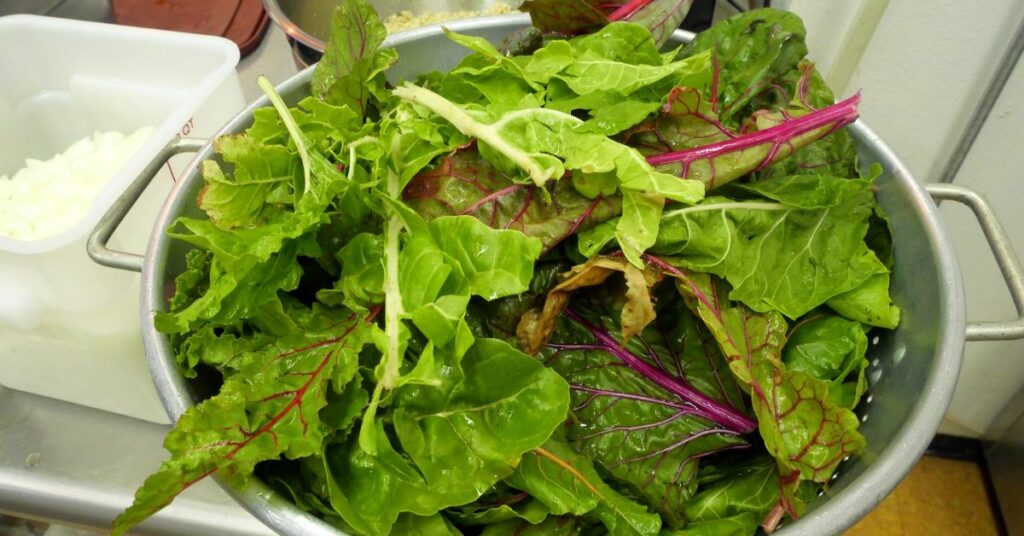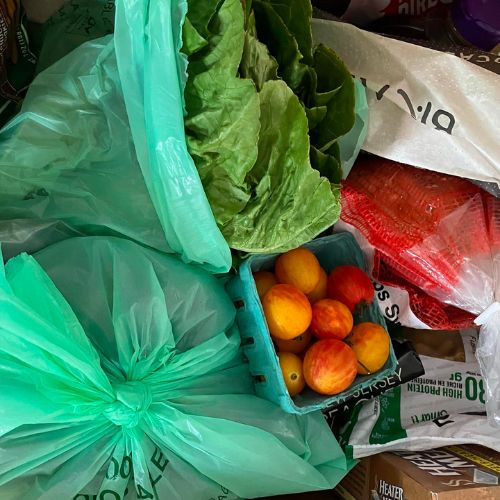
There is nothing appetizing about opening the fridge to find the spinach, kale, arugula, or other leafy greens you planned on making for dinner suddenly smelly, slimy, and sad. We see a LOT (and we mean a lot) of greens in the Second Chance Foods Kitchen and wanted to help you reduce food waste at home with some of our favorite tips and tricks for keeping greens fresh for longer!

Heads of lettuce, bundles of kale, chard, and other large leafy greens need a little prep before going into the fridge. When you get home with your greens, take the time to remove stems and any already browned bits, cut or tear into the pieces you want for later, and then package to store. *This is one instance where plastic is best* a sealed plastic bag will work best. You can use other food storage containers loosely packed, but they tend to take up more space, and the condensation sometimes speeds up spoilage.
It’s best to store greens dry, so avoid washing until you are ready to use them —especially the prewashed and packaged bags or plastic boxes of salad greens. However, if you get greens from a CSA, the farmers market, or your own garden, you might want to wash and dry them as much as possible before storing them.
You likely have a vegetable drawer or crisper for vegetables and fruit. It’s important always to store greens in something like a plastic bag because they will wilt almost immediately if left loose in the drawer or fridge. Inside the drawer, avoid storing greens alongside ethylene-producing produce like apples, avocados, cantaloupe, peppers, and tomatoes. The ethylene speeds up ripening, and lettuce, cabbage, and other greens are particularly sensitive.
Herbs live particularly well stored upright in water. When you get home from the store, remove any ties, discard (or compost) any mushy stems trapped in the bunch, and trim the ends. Then, place in a jar with a few inches of water, but avoid having the leaves sit in the water. You can store herb jars in your fridge covered with a plastic bag (loosely), uncovered, or, if you’re going to use them in a day or two, on the counter. This method is also helpful for thick-stemmed greens like kale, chard, collard greens, and even beet tops (and asparagus).


Our Individual Giving and Events Officer (and founder of The Planetarien Life), Maggy, recommends massaging kale before refrigerating so it takes up less space, plus many other benefits. She loves that it transforms kale from a big bag into a smaller package, extends its shelf-life, makes it easier to digest, and saves time for future recipes!
It’s always possible to take the steps to avoid waste and still have your greens turn. The good news is that slightly wilted (not rotten) spinach, kale, and other greens still cook up great! Throw them in a soup, stir-fry, scramble, or any dish you’d normally use them in. Try one of our favorite adaptable dishes for reducing food waste and “cleaning out the fridge”.



Though we wish we could supply food to everyone in need, Second Chance Foods cannot provide meals or groceries directly to individuals. Our solution is to collaborate with existing programs in the community and supplement their food with our meals and groceries. If you or someone you know is in need of assistance, please refer to our resource page here for our partnerships and local options.
120 Marvin Ave
Brewster, NY 10509
Volunteer Questions contact Volunteer Coordinator Melissa Paladino 845-723-1309
For all other questions please contact us at 845-723-1315